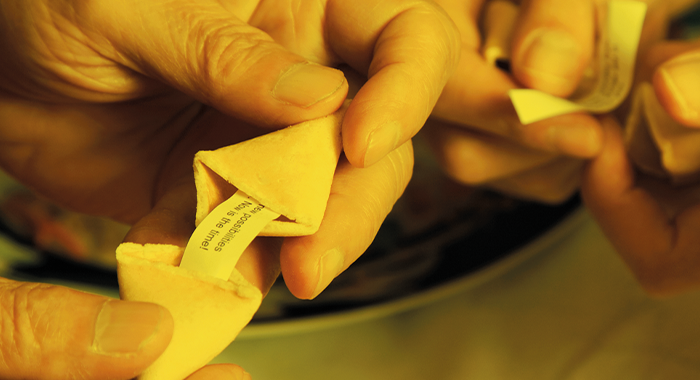Games are fun. They present a challenge, tap into our innate desire to compete, and offer a sense of accomplishment. As humans, we’re naturally attracted to things we enjoy, so what better way to promote participation and advocacy than through introducing game-like experiences that promote rewards and progression.
Within the world of marketing, using games as a method to transform mundane tasks into exciting experiences is nothing new. But within the world of loyalty and rewards programs, the successful application of gamification is relatively rare. The benefits though, are clear: gamification provides an interactive and immersive way to motivate and reward customers, boosting awareness and driving higher engagement levels.
How then, can marketers add gamification to their marketing mix to provide loyalty program members with the highly personalized experiences they crave, ultimately leading to a stronger sense of ownership and long-term brand advocacy?
10 ways to use gamification in loyalty programs
By incorporating specific gamification features and mechanics into loyalty programs – such as loyalty currency, badges, leaderboards, virtual currencies, levels, and unlockable achievements – brands can significantly enhance customer engagement and loyalty.
Here are some key gamification elements that are particularly effective in loyalty programs, real-life examples for inspiration, and customization tips to create a unique and immersive experience for each customer.
- 1) Loyalty currency: Points, miles, and cashback are fundamental elements of gamification, representing a tangible measure of progress and achievement. Customers earn points for completing actions, such as making purchases, referring friends, or engaging with their favorite brands on social media. Points can be customized by assigning incremental values to different actions, allowing customers to see the immediate impact of their interactions. Flying Blue, for example, includes an introductory offer of 500 miles for a customer’s first online purchase, while other programs present birthday bonuses or specific boosts during holidays, such as Black Friday and the Holiday season.
2) Badges: Badges represent a visual symbol of accomplishment that customers earn for specific achievements or milestones within loyalty programs. This could include reaching a certain number of points, making a certain number of purchases, or participating in special events. Customizing badges with creative designs and naming conventions adds a personalized touch and enhances a customer’s sense of accomplishment. For example, Etihad’s Conscious Choices program offers customized badges and additional tier status for traveling more sustainably, such as flying with less baggage, donating miles, or purchasing eco-friendly products from the Etihad store.
3) Leaderboards: Leaderboards display the point totals or ranks of participants, fostering healthy competition and encouraging users to strive for higher positions. To create a unique experience, leaderboards can also be segmented based on different user demographics or behaviors, such as geographic location or purchase history, making it more relevant and engaging for participants.
4) Virtual currencies: Virtual currencies, such as tokens, coins, or gems, add a layer of complexity to loyalty programs. Customers earn ‘currencies’ by completing tasks, spending them to unlock rewards or exclusive content. Customization comes into play by introducing limited-time offers or special events where customers earn bonus virtual currency, creating a sense of urgency and excitement.
5) Levels and tiers: Introducing levels or tiers to loyalty gamification provides a clear sense of progression. Customers begin at a basic level, and advance as they accumulate more points or engage in specific activities, with each level offering increasingly valuable rewards and benefits. Customizing this element involves defining the criteria for leveling up and tailoring rewards to match each tier's perceived value.
6) Unlockable achievements: Unlockable achievements represent significant accomplishments within loyalty programs. They can be tied to unique actions or events and provide customers with a sense of discovery and surprise. Customization is achieved by offering a variety of unlockable achievements, often kept secret until customers achieve them, enhancing the element of surprise. For example, Etihad and Accor routinely use prize draws and raffles as a method to increase member engagement, while British Airways and Aer Lingus run multiplier campaigns that reward members with incremental bonus points depending on transaction size.
7) Personalization and custom rewards: Customization isn't limited to gamification mechanics alone. The entire loyalty experience can be personalized based on customer preferences, purchase history, and behaviors. Custom rewards include discounts on frequent purchases or allowing customers to choose from a list of rewards that cater to their specific interests.
8) Narrative and storytelling: Incorporating a narrative into your loyalty program makes it infinitely more immersive. The program's storyline can evolve over time, introducing new challenges, characters, and events. Customers become emotionally invested in the narrative, enhancing their loyalty and engagement.
9) Special challenges and events: Periodically introducing special challenges, events, or limited-time offers injects excitement and variety into the loyalty program. These challenges could involve completing a certain number of tasks within a specific timeframe to earn bonus points or exclusive rewards. For example, Virgin Australia’s frequent flyer program Velocity uses an annual Christmas countdown campaign, posing a new challenge for each of the seven days of Christmas.
10) Social interaction and collaboration: Allowing customers to form teams, collaborate, or compete against each other fosters a sense of community. Customization options include team-based challenges, where customers collectively work towards a goal to earn rewards. For example, family plans allow members of the same household to pool and exchange points between different programs, allowing members to spend points collected on everyday purchases and other experiences from other merchants and categories.
Power up your loyalty program gamification
By strategically combining and customizing the above gamification elements, brands can create a dynamic, immersive, and tailored loyalty program experience that resonates with customers on a more personal level.
When fully aligned with your loyalty program’s objectives and target audience preferences, the resulting engagement and emotional connection from a well-executed gamification strategy can lead to some transformative results in customer loyalty and advocacy, creating the competitive differentiator many brands crave.
Want to learn more about how gamification can enhance your loyalty strategy and maximize program engagement?



